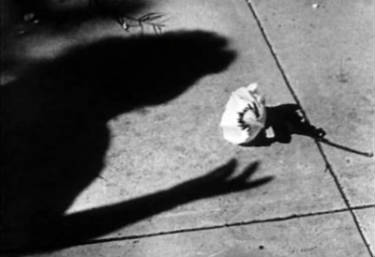Lucidno
| "Art cinema" included such movements as German Expressionism, Russian Constructivism, Surrealism and Dadaism. Avant-garde artists such as Man Ray, Hans Richter, Fernand Léger, Laszlo Moholy-Nagy, Oskar Fischinger and Walter Ruttmann all made films influenced by Cubism and Abstraction.
In the 1940s, a period of experimental film-making began in the USA. Maya Deren's Meshes of the Afternoon (1943) was one of the first independent American Underground films, a movement that later, though rooted in the European avant-garde, was strongly connected to the Beat movement. In the early 1950s, younger directors such as Stan Brakhage emerged, working in a similar mode. The French nouvelle vague directors took advantage of the new technology - fast film, lightweight camera equipment - that enabled them to shoot in the streets with hand-held cameras and a small team. They deconstructed conventional narratives by using jump cuts, improvisation, and quotes from literature and other films. Alain Resnais rejected a chronological structure completely in L'année dernière à Marienbad (1961). The most influential of the writers of the nouveau roman in the late 1950s, Alain Robbe-Grillet, who wrote the screenplay for Marienbad, and the novelist Marguerite Duras, screenwriter of Resnais's Hiroshima mon amour (1959), went on to direct their own very personal films, playing with time and the incongruity between sound and images. Towards the end of 1960, the New American Cinema Group was formed, inspired by the French nouvelle vague, favouring films that were "rough, unpolished but alive". Many, such as Jack Smith's Flaming Creatures (1963), embraced Hollywood even as it defied its narrative traditions. The mode for campness was exploited by the films of Andy Warhol in films such as Blow Job (1963), and Kenneth Anger's Scorpio Rising (1964). Michael Snow, in Wavelength (1967), attempted to redefine our way of seeing by exploring new time and space concepts. However, the experimental elements of the nouvelle vague soon became assimilated into mainstream film. Many of the technical and conceptual advances of Italian, Czech, British and other New Waves were transformed into film-making clichés. The American Underground had also all but vanished by the 1970s. It seemed as though realism, which had dominated film for decades, had finally triumphed over formalism.
|
According to the Hungarian academic and critic Bence Nanay, "the films of Antonioni, Godard and Resnais are, strictly speaking, narrative films, but more importantly, they represent a fragile balance between non-narrative avant-garde films and narrative films. This fragile balance disappeared by the beginning of the Seventies. On the one hand, not only Hollywood but also the so-called European art-house cinema produced conventional, non-avant-garde narrative films; on the other hand, some non-narrative, uncompromising but hard-to-distribute experimental films (by Steve Brakhage, Michael Snow etc) were being made at the periphery. The middle ground vanished." Now, in the early years of the 21st century, we are increasingly seeing the avant-garde abandon the cinema for the gallery - a shift made possible by the digital revolution. It is becoming necessary to redefine film without reference to its previous conditions of existence, by reference, not to the narrow context of the history of cinema, but to the wider field of art history. One can only hope that the new age will eventually bring about masterpieces, resurrecting "modernist" cinema. Ronald Bergan |


